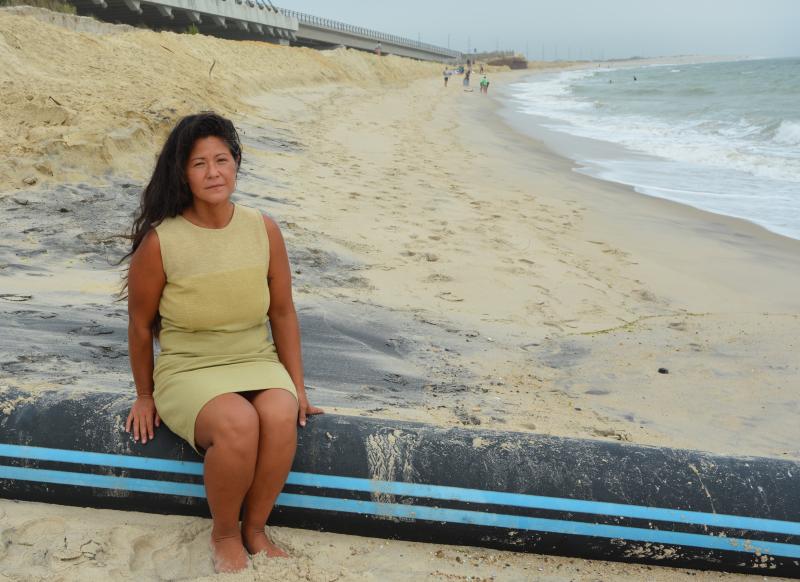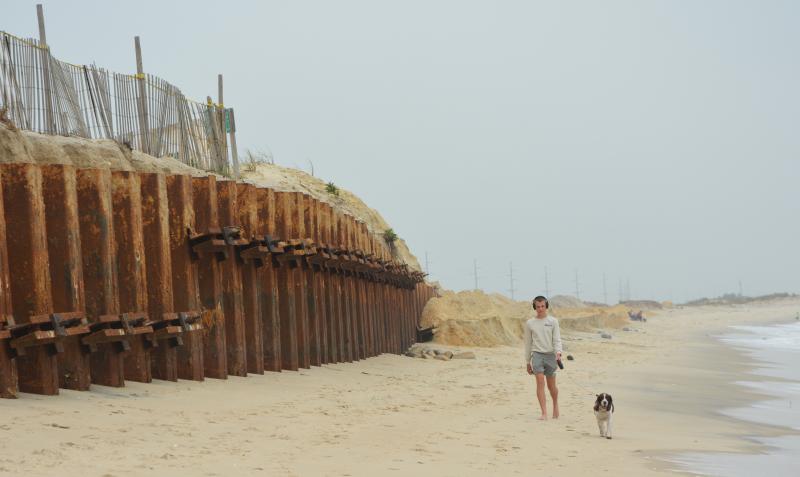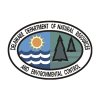For over a year now, the Delaware chapter of the Surfrider Foundation has been raising concerns about large pieces of debris that continue to surface on the Delaware Seashore State Park beach immediately north of the Indian River Inlet.
Now, following the recent breach of the Route 1 dune north of the Indian River Inlet and the subsequent placement of riprap by the state to fortify the dune, Surfrider Foundation is calling for the state to host a public meeting about the beach’s dangerous and dire conditions.
A little less than two weeks ago, Aug. 18, Hurricane Ernesto passed by Delaware hundreds of miles out in the Atlantic Ocean. The skies were generally clear, but after a couple days of big waves and strong currents, water breached the dune. The dune was almost breached the weekend before when Hurricane Debby passed to the west, and it was the second time since March that a significant storm caused a dune breach.
However, unlike dune breaches in the past, when the Delaware Department of Natural Resources and Environmental Control trucked in tons of sand, the state dumped sand and large rocks at the site.
In a press release issued Aug. 27, Surfrider asks the Delaware Department of Transportation, DNREC and Delaware Seashore State Park to host a public meeting. Surfrider is requesting the meeting take place in September, be announced in advance, held on a weekday evening near the Indian River Inlet, and, if possible, streamed online.
Debris on the beach includes chunks of asphalt and concrete, rusty metal, corroded pipes and large creosoted wooden boards, said the advocacy group’s press release. The debris has become uncovered from lack of adequate sand moving through the sand bypass system, which has been inoperable since 2019, and conditions deteriorated further after DelDOT dumped the riprap in an attempt to halt water overtopping the road, said Surfrider.
“Where is the accountability? Where is the proactive approach to environmental stewardship? And where are the permits? One thing is clear, the need for responsible and transparent management of Delaware’s coastal resources has never been more urgent,” said Crystal Stokowski, vice chair of the Surfrider Foundation’s Delaware chapter, in a prepared statement.
As the fall hurricane and winter storm season approaches, the erosion in the Indian River Inlet area will almost certainly increase, which means a proactive, comprehensive, long-term plan is needed, said Surfrider.
“The public has the right to ask questions and receive information about plans to address these dangerous and avoidable conditions,” said the volunteer group.
In response to Surfrider’s request and concerns, Micheal Globetti, DNREC spokesperson, said the state agency has had a long-term plan for a full dredging and beach replenishment project there in 2025, but recent storms and breaches of the dune have caused DNREC to attempt to expedite the project. Moving on it, and moving aggressively, would require significant funding from both the state and federal partners, he said, estimating it could cost as much as $15 million.
Unlike other beach nourishment projects, the north side of the Indian River Inlet has not been included in the work that’s been partially funded by the U.S. Army Corps of Engineers.
Globetti said since October 2023, DNREC has spent about $500,000 on sand alone and $140,000 on heavy equipment at the north side of the inlet for upkeep of the beach and the dune. But even with the additional sand and securing of the dune, storms continue to damage and erode the area at a rate faster than DNREC can sustain its renourishing work, he said.
Throughout the timeline for the two breaches this year, DNREC has continued to lead a cleanup of debris in the area, in coordination with volunteer groups, and has removed more than 1 million pounds since June 2023 when the project first began.
The sand bypass plant is expected to be completed by the end of the year, but that was never intended to be the permanent solution to the increasingly alarming situation, said Globetti.
Globetti said the agency shares the mounting levels of concern for the north side of the inlet.
“The department knows that, with the impacts of climate change creating more frequent, severe storms and dangerous conditions, unless more resources are committed for taking it on, the situation at the dune, beach and Route 1 north of the Indian River bridge will become more dire,” said Globetti. “This is no longer a beach replenishment project, but a transportation infrastructure and public safety undertaking that requires the full support of DelDOT, DNREC, [Army Corps] and the General Assembly on both a fiscal and physical front.”
DNREC will also continue to meet with community partners to address their concerns and keep them informed about ongoing efforts, said Globetti.

Chris Flood has been working for the Cape Gazette since early 2014. He currently covers Rehoboth Beach and Henlopen Acres, but has also covered Dewey Beach and the state government. He covers environmental stories, business stories and random stories on subjects he finds interesting, and he also writes a column called Choppin’ Wood that runs every other week. He’s a graduate of the University of Maine and the Landing School of Boat Building & Design.























































